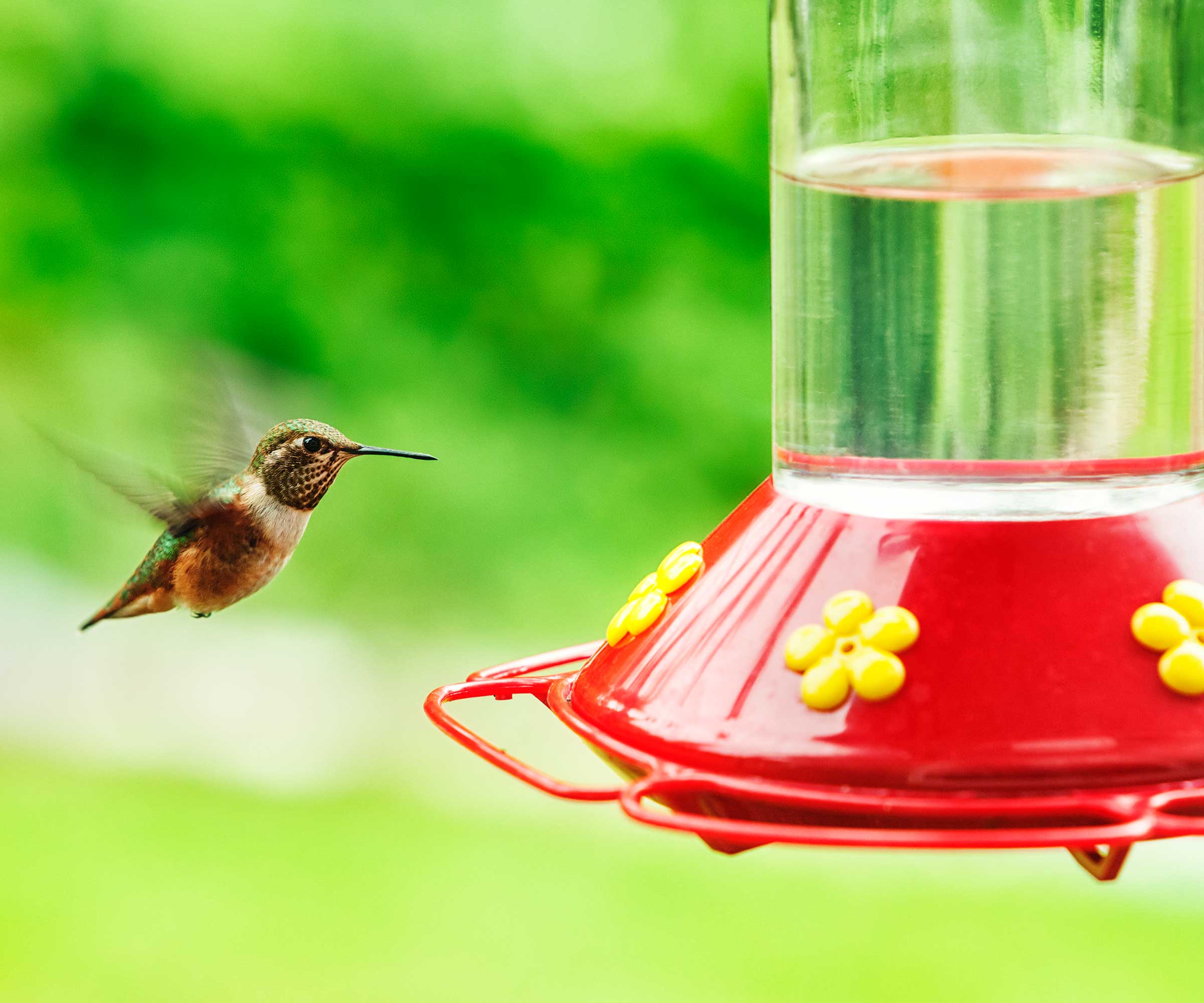
Putting out hummingbird feeders is a great way to give these wondrous creatures a helping hand, while feeling closer to nature and bringing more color and life to your outdoor space.
To ensure your feeder is as inviting as possible, positioning is important. Whether you're offering homemade hummingbird food or shop-bought nectar, such as Kaytee's hummingbird food from Amazon, these are the key things to bear in mind.

5 quick tips to remember when positioning your hummingbird feeder
Attract hummingbirds to your yard with these easy tips.
1. Place it within arm's reach for easy maintenance
'To keep hummers healthier, or at least avoid contributing to poor health, the feeder and nectar must be fresh and mold-free,' says Tammy Poppie, an expert from OnTheFeeder.com.
'Nectar needs to be refreshed every few days (more often in extreme heat),' Tammy continues. And the hummingbird feeders themselves need to be cleaned frequently. 'Even if you don't visually see mold, it is often still present.'
So, to enable you to maintain the feeder and nectar regularly, the ideal spot should be easy for you to reach.
2. Hang it somewhere shaded
Direct sunlight will encourage faster fermentation of your hummingbird food and the growth of mold. So, Tammy recommends placing your feeder somewhere that is shaded for half of the day or more to slow down the effects.
This will keep the nectar fresher for longer, and will attract more hummingbirds overall, she says. Try beneath an awning on the edge of a porch or under the canopy of a garden tree.

3. Provide nearby cover
Placing your feeders within 10-15ft of shrubs and trees will mean the birds have a safe place to shelter should any predators come along. It also gives them a shaded space to perch and rest their wings.
Just ensure there's enough space directly around the feeder for them to maneuver.

4. Keep it away from other bird feeders
Allow these small creatures their own area of your backyard so that they can feast in peace, safely away from the threat of seed-feeding wild birds.
If you have the space, it's also a good idea to hang more than one hummingbird feeder relatively closely together. This will lessen the risk of the birds acting territorially and aggressively toward one another.
5. Make sure you can enjoy the view
Part of the joy of feeding these feathered friends is watching them flit to and fro. So, when you put out your hummingbird feeder, you'll want to hang it somewhere you can see it – either from your patio or perhaps your kitchen window.
As is the case when placing any bird feeder, avoid placing it too close to a window, though, as this can encourage injuries.

Bear these simple tips in mind and your feeder will be more inviting for birds and easier to maintain for you – not to mention more enjoyable to watch. And if you want to boost the numbers of these adorable creatures in your yard even further, why not consider growing plants that attract hummingbirds in nearby containers and flower beds, too?







